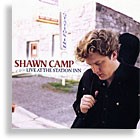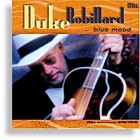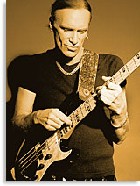Westwood 75
While the mantra for 21st century “alternative material” guitars focuses on carbon fiber (i.e. Rainsong acoustics) and wood/glass/carbon fiber/epoxy composites (i.e. Ken Parker’s Fly line), electric guitars made of things other than wood go way back. And one of the first companies to venture away from wood construction was Valco, which in 1962 introduced the National and Supro lines (as well as contract brand names like Airline) of fiberglass-bodied electrics.
Valco, who could hype with the best of its peers, certainly wouldn’t settle for saying it was using “fiberglass.” No, it could do better. And arguably it did when it dubbed the material used in its early-’60s line of single-cutaway map-shaped electric guitars “Res-O-Glas.” Uh huh.
Ultimately, there were nine map-shaped Res-O-Glas guitars in the Valco line, all carrying the National name and ranging from the basic Newport to the overly sophisticated Glenwood 99. And for the record, these were not planned as “map guitars,” rather their shape and design merely grew out of the aesthetics of early-’60s solidbody guitar gestalt.
The 1964 Westwood 75 shown here was technically part of the line, but different for a couple reasons; 1.) it was made of wood, and 2.) it was the only model offered in a sunburst finish (its Res-O kin were available in Duco Seafoam Green, red, white, or black).
The Westwood’s treble horn is neatly curved down while the upper horn is flattened and stretched to accommodate a selector switch. Voila! – the continental United States (sort of) in an electric guitar, 15 years before the limited edition Gibson/Epiphone “map” guitar! The rest of the body is generically rounded, but an interesting feature is the relief (a.k.a. “German carve”) of the top, which adds an element of surface tension to the design and helps avoid the “slab” look.
This Westwood appears to be a single-pickup model with a neck-position humbucker. But hidden in the bridge is a contact pickup – more than 10 years before tranducers entered the mainstream on acoustic guitars, and 30 years before the emergence of electric/acoustic hybrids like the Parker!
Other National electrics had more pickups, and some had fancier trim, but they all have a similar playability that takes a little adjustment. Though today considered one of the must-haves amongst cheap/cool collectible guitars (expect to pay $800 to $900 for a Westwood in all-original, excellent condition), in its time, high production costs and retail prices (the Glenwood retailed for $25 to $30 more than a Fender Stratocaster at the time) combined to knock the Westwood and its Reso-O brethren out of existence by 1965. But the concept was cool enough that all-wood copies emerged in the mid ’90s. Retro lives! – ECS
Fifteen Reasons to Own a National Glenwood 99
1 Something old. Instruments began appearing with the National moniker in the mid 1920s, several years before the company had even been officially chartered. By 1930, the John and Rudy Dopyera’s operation was offering a full catalog range that included some of guitar history’s most timeless designs.
Every introduction from the Los Angeles-based concern rivaled the previous, and each incorporated some unorthodox (and patentable) material or construction. The National name was soon synonymous with innovation and first-rate quality.
2 Something new. By the middle of the ’30s, however, creative vision was as confusing as the corporate waters were muddy. Half of the partners had marched off in a huff to Chicago to compete with National.
They formed Dobro, but they merged back with the originals (as the National-Dobro company) to survive the throes of the Depression. In ’42, they reorganized once more (with a sampling of additional players) as Valco. It was Valco, a huge Chicago manufacturer (and a far cry from the Dopyera’s shop) that subcontracted gajillions of electric and acoustic guitars, amps, and related stuff right up through the late ’60s under a wide variety of names. But they saved their best for the name they retained – National.
3 Something borrowed. In 1963, the Studebaker automobile company introduced the smartly styled Avanti, and then promptly went belly-up. After decades of contorting vehicle metal into the ever-more-ridiculous demands of outlandish fins, dashboards, and fenders, producing a sleek Raymond Loewy design should have been a cakewalk. It wasn’t.
The tantalizing and seemingly profitable technology that enticed Studebaker off the beaten path was a brand new class of plastics called “resins.” Only just making the manufacturing scene, the story sounded too good to be true. You mixed gooey liquid A with gooey liquid B and poured the result into a mold with some shredded glass threads and it came out looking bee-ootiful. With limited finishing (shoot, you could add the final color right in the resin) and a little assembly, Bunky, you were on your way to the bank. It wasn’t half as easy as it looked, and the various bugs weren’t worked out until a few years later.
Valco fell for the same pitch when they unveiled their “Res-O-Glas” lines for both National and Supro at just about the same time as Studebaker presented the Avanti.
4 Something Seafoam Green. Valco’s guitars consisted of two thin halves of hollow fiberglass shell enveloping a narrow solid wooden core. A more traditional painted wooden neck, as well as pickups, controls, and tailpiece were all anchored to the sturdy center block. Finally, a continuous bead of flexible vinyl neatly connected the rough glass-fiber edges of front and rear sections.
The most endearing, and enduring, quality resulting from the Res-O-Glas construction was the color. They almost glowed. The depth of the pigmented resin produced an almost iridescent quality unattainable by painting mere wood. Valco’s limited palette clearly derived from Leo Fender’s custom Duco colors, yet the plastic saved them from the rigors of age that dull and yellow most paint finishes.
5 Brush up on your geography. Turn the page sideways (with the neck to your right) and you’ll glimpse the source for Glenwood’s characteristic shape. That’s right, it’s the good old U.S. of A., with a bass cutaway horn that resembles Maine, a treble cutaway horn that is Florida, and extra lower bout cutout like the Mexican border. The tuners, however, are in Portugal.
6 Win bets. Say, buddy, how many pickups are on this guitar? Care to wager? Another patented feature common to some Valco-made instruments was a contact pickup inside the guitar’s otherwise normal rosewood bridge. Dubbed “Silver Sound” in company literature, it complements the more ordinary “Vista-Power” units, is almost invisible to the naked eye, and could spell big bucks for you.
7 A swanky floating pickguard. Cross the best elements of floating side-mounted scratch plates (à la Gibson and Gretsch archtops) with screwed-down top covering ‘guard technology from Fender and Rickenbacker solidbodies. Add multicolor rear-side applied and engraved decoration of an old-style National shield, and leave clear areas in between silkscreened vertical stripes to let the stunning resin color shine through, and you’ve got yourself a Glenwood pickguard.
8 Creative lutherie. An inexplicable, yet not entirely unattractive, feature of virtually all bound-fingerboard Valco instruments is fret-slotted binding. Normally, manufactured fingerboards are slotted, then fretted unbound, with plastic added lastly to cover and obscure the fret slots. Valco saw it (and sawed it) differently, with fret slots cut right through the pretty white celluloid.
9 Magnesium reinforced neck. Absolutely guaranteed by National not to warp for five full years. Unfortunately, those years were up during the Lyndon Johnson administration. This leaves you pretty much out of luck if you have a Glenwood with a curvy neck, since the bolt-on affair includes no easy method of adjustment. Happily, most have stayed pretty straight.
10 Knobs-a-poppin! National’s three Glenwood choices all came equipped with a full complement of controls, including a pickup selector, three individual tone, three individual volume, and an oversized master volume adjustment (right there in southwestern Nevada).
11 Flashy fingerboards. Whereas the majority of Valco instruments include fairly lackluster necks, the Glenwoods alone feature a full complement of dazzling ornamental designs, in a plastic and pearl combination, topped off with an intonation-improving zero fret.
12 Nothing but the best. With its genuine Bigsby tailpiece, Grover Rotomatic tuners, three pickups, seven knobs, Seafoam Green Res-O-Glas body, and gleaming gold-plated metal parts, the 99 is clearly the leader of the Glenwood pack. The plainer red Glenwood 95, and the midline white Glenwood 98, both offer considerable appeal, but neither can match the panache of the 99.
13 Avoid the rush. With prices for Valco-made guitars – and particularly the Glenwoods, which are now going for $1,500 to $2,000 – beginning to overtake those of more traditionally desirable makes, if you’ve ever wanted one you may want to act now, or be sorry later. Since the troublesome resin technology insured a relatively brief production run, the number of extant pieces is less than one might think.
Recent trends show players and collectors manifesting considerable interest in a variety of instruments that just a few years ago were the subject of scorn and laughter. Foremost among these are the more flamboyant models – particularly in cool colors like this one.
14 Lose friends; make new ones. Few guitars have such a polarizing effect on guitar collectors; people either love them or they hate them. No middle ground. But if you count yourself among the believers, you won’t walk alone.
15 They float. – RJK
The Westwood 75 and the Glenwood 99.
This article originally appeared in VG‘s Jun. ’01 issue. All copyrights are by the author and Vintage Guitar magazine. Unauthorized replication or use is strictly prohibited.
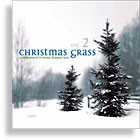

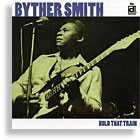
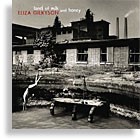
.jpg)
